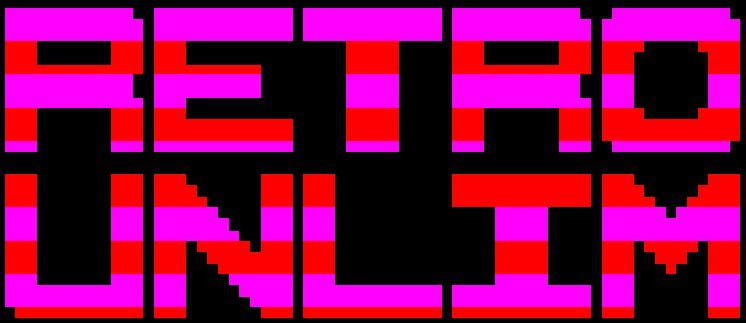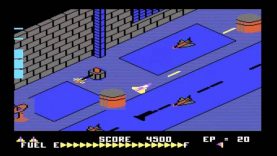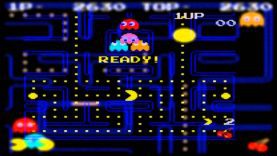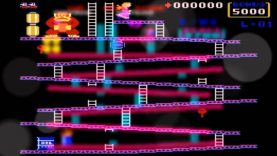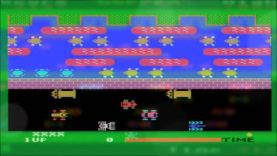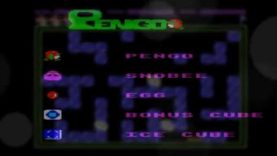Let’s Compare ( Classic Pac-Man )
Gaming History Source
Video Locations:
Arcade 0:23
Atari 2600 1:00
Atari 2600 Home Brew Hack 1:41
ZX Spectrum 2:19
Intellivision 2:57
Atari 5200 3:36
Amstrad CPC 4:14
Commodore 64 4:53
MSX 5:32
Gameboy 6:10
Neo Geo Pocket Color 6:49 ( Sound Issues )
Game Gear 7:28
Windows Mobile 8:06
NES 8:45
N64 (Namco Museum) 9:23
Gameboy Advance ( Pac-Man Collection ) 10:01
(( I am aware that it is not exclusive to Europe. I had bad information in My research.))
Colecovision ( Pac-Man prototype Never relesed ) 10:40
Colecovision ( Opcode Games The Pac-man Collection ) 11:19
Coleco Table Top 11:56
Description Source:
http://en.wikipedia.org/wiki/Pac-Man
Pac-Man (パックマン, Pakkuman?) is an arcade game developed by Namco and licensed for distribution in the United States by Midway, first released in Japan on May 22, 1980.[1][2] Immensely popular from its original release to the present day, Pac-Man is considered one of the classics of the medium, virtually synonymous with video games, and an icon of 1980s popular culture.[6][7][8][9] Upon its release, the game—and, subsequently, Pac-Man derivatives—became a social phenomenon[10] that sold a bevy of merchandise and also inspired, among other things, an animated television series and a top-ten hit single.[11]
When Pac-Man was released, the most popular arcade video games were space shooters, in particular Space Invaders and Asteroids. The most visible minority were sports games that were mostly derivative of Pong. Pac-Man succeeded by creating a new genre and appealing to both genders.[12] Pac-Man is often credited with being a landmark in video game history, and is among the most famous arcade games of all time.[13] The character also appears in more than 30 officially licensed game spin-offs,[14] as well as in numerous unauthorized clones and bootlegs.[15] According to the Davie-Brown Index, Pac-Man has the highest brand awareness of any video game character among American consumers, recognized by 94 percent of them.[16] Pac-Man is one of the longest running video game franchises from the golden age of video arcade games, and one of only three video games that are on display at the Smithsonian in Washington D.C. (along with Pong and Dragon’s Lair).
GAME PLAY
The player controls Pac-Man through a maze, eating pac-dots. When all dots are eaten, Pac-Man is taken to the next stage, between some stages one of three intermission animations plays.[18] Four enemies (Blinky, Pinky, Inky and Clyde) roam the maze, trying to catch Pac-Man. If an enemy touches Pac-Man, a life is lost. When all lives have been lost, the game ends. Pac-Man is awarded a single bonus life at 10,000 points by default—DIP switches inside the machine can change the required points or disable the bonus life altogether. Near the corners of the maze are four larger, flashing dots known as power pellets that provide Pac-Man with the temporary ability to eat the enemies. The enemies turn deep blue, reverse direction and usually move more slowly. When an enemy is eaten, its eyes remain and return to the center box where it is regenerated in its normal color. Blue enemies flash white before they become dangerous again and the amount of time the enemies remain vulnerable varies from one stage to the next, but the time period generally becomes shorter as the game progresses. In later stages, the enemies don’t change colors at all, but still reverse direction when a power pellet is eaten.
Enemies
North American Pac-Man title screen, showing the official enemy names.
The enemies in Pac-Man are known variously as “ghosts” and “monsters”.[19][20][21] Despite the seemingly random nature of the enemies, their movements are strictly deterministic, which players have used to their advantage.[22] In an interview, creator Toru Iwatani stated that he had designed each enemy with its own distinct personality in order to keep the game from becoming impossibly difficult or boring to play.[23] More recently, Iwatani described the enemy behaviors in more detail at the 2011 Game Developers Conference. He stated that the red enemy chases Pac-Man, and the pink and blue enemies try to position themselves in front of Pac-Man’s mouth.[24] While he claimed that the orange enemy’s behavior is random, a careful analysis of the game’s code reveals that it actually chases Pac-Man most of the time, but also moves toward the lower-left corner of the maze when Pac-Man is facing a certain direction.

